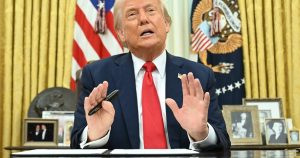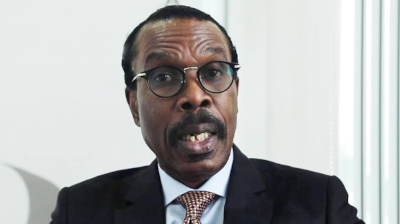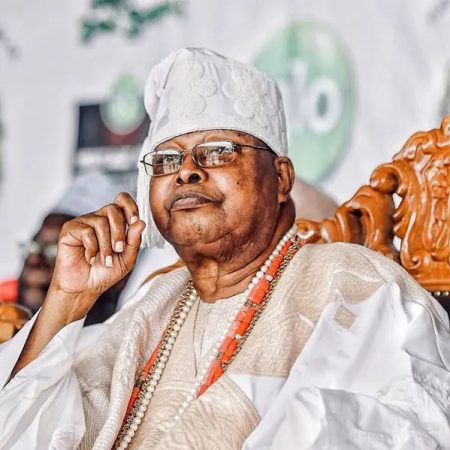Bismarck Rewane’s Economic Outlook: A Detailed Analysis
Bismarck Rewane, a prominent economist and Managing Director of Financial Derivatives Limited, recently presented his mid-term economic review for the current administration at the Lagos Business School Breakfast session. His projections offer valuable insights into the Nigerian economy’s trajectory in the near term, covering key aspects such as exchange rates, inflation, GDP growth, oil prices, and corporate performance. Rewane’s analysis paints a picture of cautious optimism, acknowledging challenges while highlighting positive developments within the Nigerian economic landscape.
A core element of Rewane’s forecast centers on the naira’s exchange rate against the dollar. He projects the naira to trade within the range of N1,600-N1,650 to a dollar in the near term. This prediction stems from the observation that the official and parallel market rates have converged significantly post-reforms, with the spread now within a manageable N50 margin. This convergence suggests that the naira is now fairly priced, reducing arbitrage opportunities and promoting stability. Rewane highlights the naira’s undervaluation by 26.82% and the dollar’s 8.7% year-to-date weakening as factors that could potentially bolster the naira’s strength. This view is corroborated by analysts at Meristem, who anticipate relative stability for the naira at the official window due to continued FX interventions and improved market liquidity. However, they caution that the parallel market may face pressure from persistent demand and speculative activities, potentially widening the gap between the two markets.
On the macroeconomic front, Rewane forecasts a slight decline in inflation to 23.15% for the June/July period. He projects Q1 2025 real GDP growth at 3.4%, indicating moderate economic expansion. Regarding the oil sector, a crucial component of the Nigerian economy, Rewane anticipates Brent crude to trade within the $60-$63 per barrel range, influenced by OPEC+ output increases. He expects Nigeria’s oil production to rise to 1.5 million barrels per day (mbpd). Domestically, he projects a marginal decline in the price of Premium Motor Spirit (PMS) to N845/litre and diesel to trade at N950/litre. Rewane also foresees a flat FAAC allocation at N1.6 trillion due to corporate income tax clawbacks reducing tax liabilities. Furthermore, he anticipates a 50 basis points reduction in the Central Bank of Nigeria’s benchmark interest rate at its next meeting. Interestingly, Rewane believes that Nigeria will largely remain unaffected by the tariffs imposed by the US in the global trade arena.
Rewane’s analysis extends to the corporate sector, where he anticipates a positive outlook. He observes strong revenue and profit growth among Nigerian companies, attributed to robust business performance and a higher proportion of domesticated debt, which mitigates the risks associated with naira devaluation compared to foreign loans. The private sector’s enhanced access to local funding, particularly for working capital and short-term needs, evidenced by the increased volume of commercial papers, has further supported expansion and bridge financing. Rewane emphasizes the adaptability of Nigerian corporates, highlighting their strategies of repricing, local sourcing, and digital transformation.
The overall sentiment among investors appears to be improving, driven by FX reforms, increased policy clarity, and signs of macroeconomic stabilization. Rewane notes renewed investor interest in sectors like banking, infrastructure, and energy, although cautious observation of the policy environment persists. The gradual return of portfolio investors is attributed to higher yields, a more flexible exchange rate, and greater transparency from the central bank. These combined factors contribute to Rewane’s optimistic outlook for the Nigerian private sector.
Rewane’s projections are not without caveats. While he anticipates relative stability for the naira at the official exchange rate, the parallel market remains susceptible to pressures from demand and speculation. The widening spread between the two markets, observed in May, underscores this vulnerability. Furthermore, the projected decline in inflation, while welcome, still leaves it at a high level, requiring continued vigilance from policymakers. The global economic landscape, marked by uncertainties and trade tensions, also poses potential risks to Nigeria’s economic outlook.
In conclusion, Bismarck Rewane’s mid-term economic review presents a cautiously optimistic view of the Nigerian economy. The convergence of official and parallel market exchange rates, coupled with proactive FX interventions, points towards greater stability for the naira. The projected decline in inflation, moderate GDP growth, and positive corporate performance further support this optimistic outlook. However, challenges persist, including potential pressures on the parallel market exchange rate, the need for continued efforts to curb inflation, and the ever-present uncertainties of the global economic environment. Rewane’s analysis underscores the importance of continued policy reforms, macroeconomic stability, and private sector adaptability in navigating these challenges and realizing Nigeria’s economic potential. His projections provide valuable insights for businesses, investors, and policymakers as they navigate the Nigerian economic landscape in the near term.














